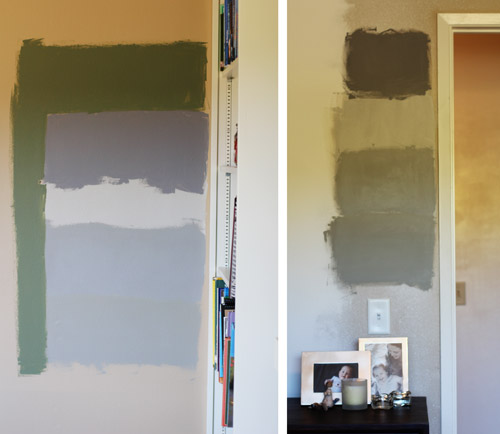Choosing a paint color is not a decision to be taken lightly as it impacts how a room will feel and how it will relate with all your furnishings. As a color expert and professional home stager, I always see people tend to make the same mistakes when choosing paint colors. Here are my tips for getting it right the first time:
1. Consider the big picture.
What is the color of your fixed elements, lightning and how will the paint color will go with your furniture. You will have to take in consideration how your room will relate to the other rooms around it, especially if you have an open layout. You don’t want to be matchy matchy (you really shouldn’t) but there has to be cohesion and flow with each room otherwise your home will look choppy.
2. Take in consideration how do you want the room to feel
The fact that you like a color it doesn’t mean you will necessarily like the way you feel surrounded by it when it will be up on four (or more) walls. I like all kind of shades of reds, but the thought of waking up to that color doesn’t sound appealing to me.
3. Test the paint before painting.
I cannot stress this enough, but you have to test the paint before painting it all over your house. Yes, the color looked great at your friend’s house, it’s the most popular color on Pinterest and HGTV. Sure, you should research it and see how it looks in different houses and different lightning, but you MUST look at a large sample in your home because there no two rooms with the same lighting and finishes.
4. Always look at the paint chip against the wall.
If the paint goes up on the wall then that’s how you should look at the paint chip – flat against the wall.
But, don’t do this:

5. Don’t compare paint colors with each other
or with your current wall color especially if that wall color is completely different or bright. When I am doing a consult and face this issue I put up a larger piece of white paper behind the sample we’re looking at.
The correct way to try the paint samples is by painting large area of one paint color on a white paper board and putting it flat against the wall. Of course you shoulmoving it around to see how different light affects the color
6. Don’t forget the finish – it can make or break a color decision. Usually darker colors can read very flat and the finish of the paint can bring out or take away from the hue. The same goes for whites. For example, using Linen White in a flat finish it will read pretty much read blah and, well, flat as compared with painting it in egg shell finish that will bring out the cream.

